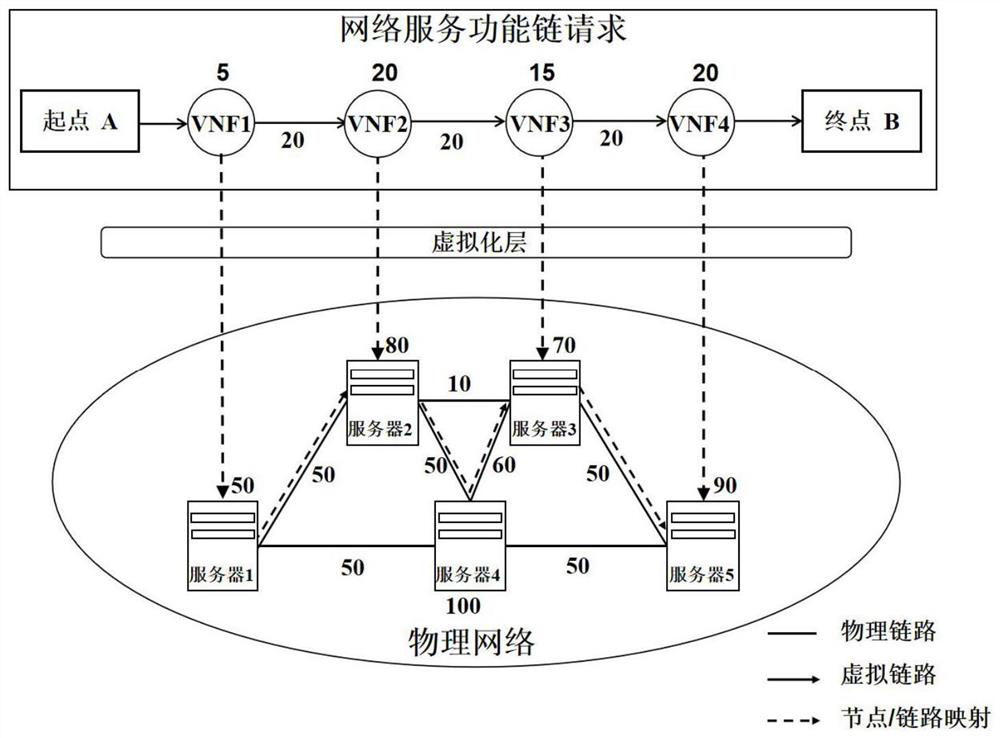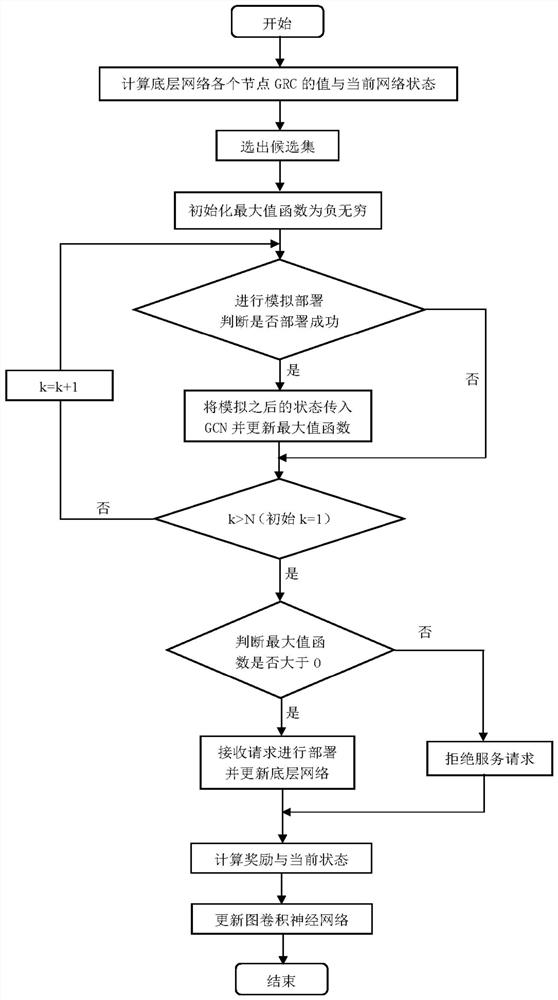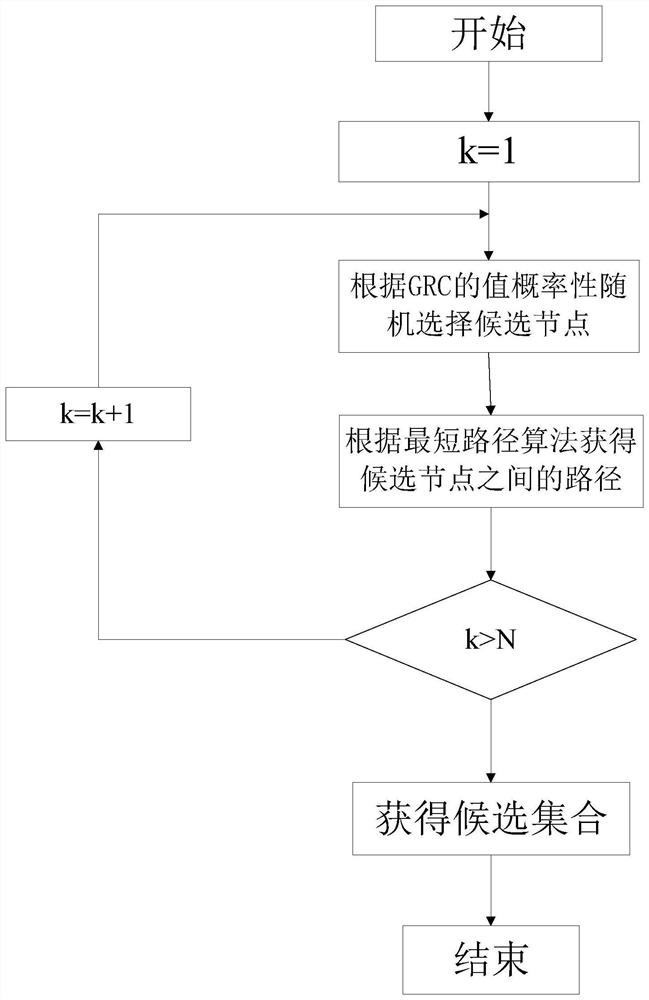Network service function chain deployment method
A service function chain and network service technology, applied in the field of network service function chain deployment, can solve problems such as large computing power, large search space, and unsuitable real-time deployment decisions, and achieve the effect of reducing complexity and improving prediction performance
- Summary
- Abstract
- Description
- Claims
- Application Information
AI Technical Summary
Problems solved by technology
Method used
Image
Examples
Embodiment 1
[0051] see Figure 1 to Figure 4 , a network service function chain deployment method, comprising the following steps:
[0052] 1) Read the current physical network information and service function chain request.
[0053] The physical network information includes physical network topology A and remaining resource capacity state s k , where s k Contains remaining node capacity and remaining link bandwidth.
[0054] The service function chain request is recorded as SFCs={SFC1, SFC2, SFC3, . . . , SFCn}. n is the number requested by the service function chain.
[0055] 2) Calculate the global resource capacity value of each node in the underlying network based on the physical network information.
[0056] Among them, the global resource capacity value r(u) of node u is as follows:
[0057]
[0058] In the formula, d is a constant. d ∈ (0, 1). Indicates the node u capacity after normalization. N(u) represents the set of nodes adjacent to node u. b(u, v) represents th...
Embodiment 2
[0090] An application experiment of a network service function chain deployment method, comprising the following steps:
[0091] 1) Read the current physical network information and service function chain request.
[0092] The service function request includes four virtual network functions {VNF1, VNF2, VNF3, VNF4}. The values between the virtual network functions represent the required bandwidth resources, and the values above the virtual network functions represent the required node capacity. The physical network includes 5 The values between the servers represent the remaining bandwidth resources, and the values above or below the servers represent the remaining node capacity. The virtual network function requested by the service function is deployed to 4 servers, and the virtual link requested by the service function is deployed to 4 servers. physical link.
[0093] 2) When a new service function chain request SFCk arrives, the environment simulates deploying it a...
PUM
 Login to View More
Login to View More Abstract
Description
Claims
Application Information
 Login to View More
Login to View More - R&D
- Intellectual Property
- Life Sciences
- Materials
- Tech Scout
- Unparalleled Data Quality
- Higher Quality Content
- 60% Fewer Hallucinations
Browse by: Latest US Patents, China's latest patents, Technical Efficacy Thesaurus, Application Domain, Technology Topic, Popular Technical Reports.
© 2025 PatSnap. All rights reserved.Legal|Privacy policy|Modern Slavery Act Transparency Statement|Sitemap|About US| Contact US: help@patsnap.com



